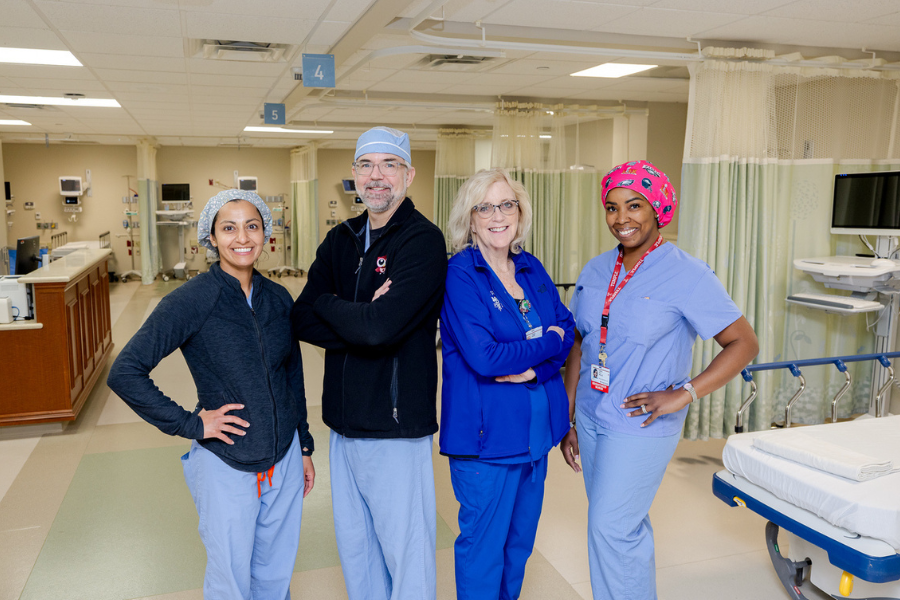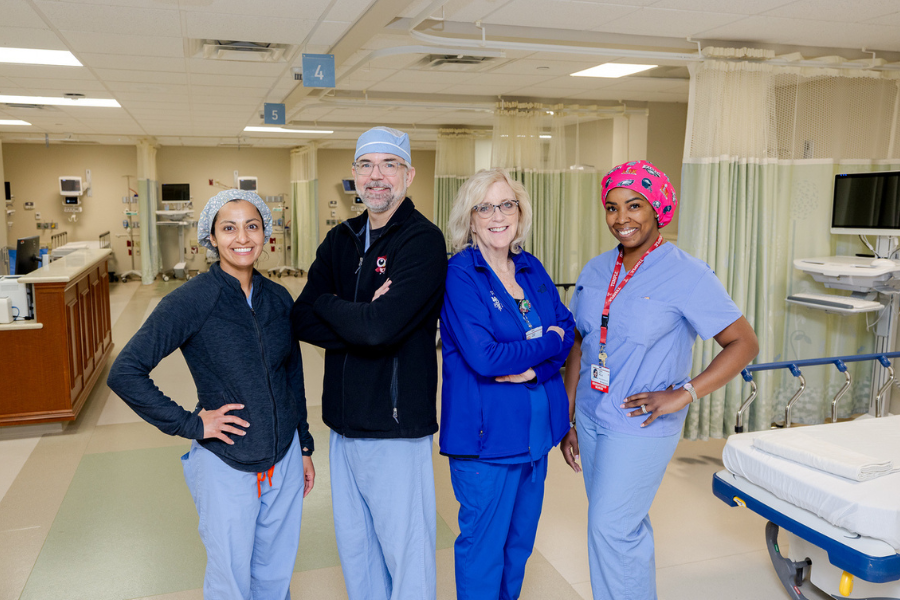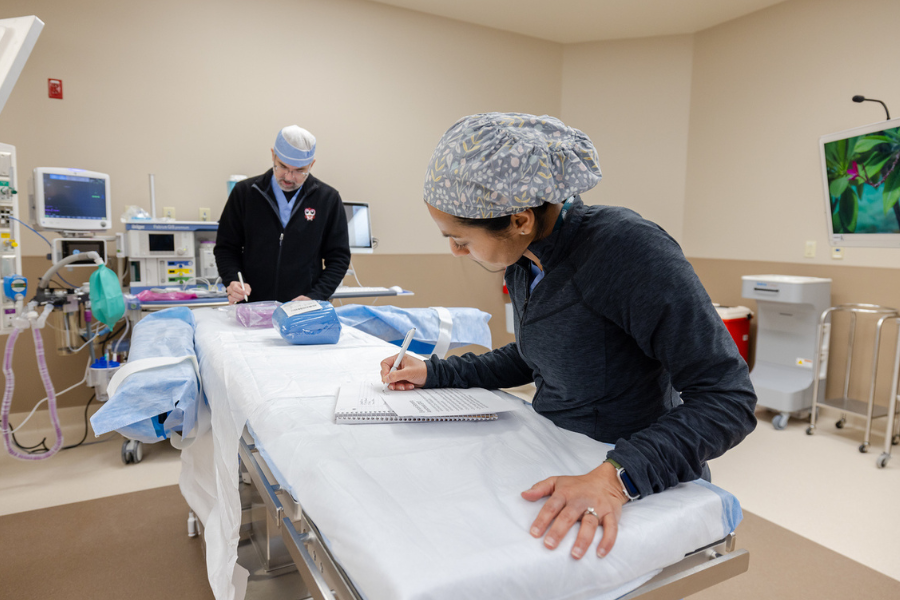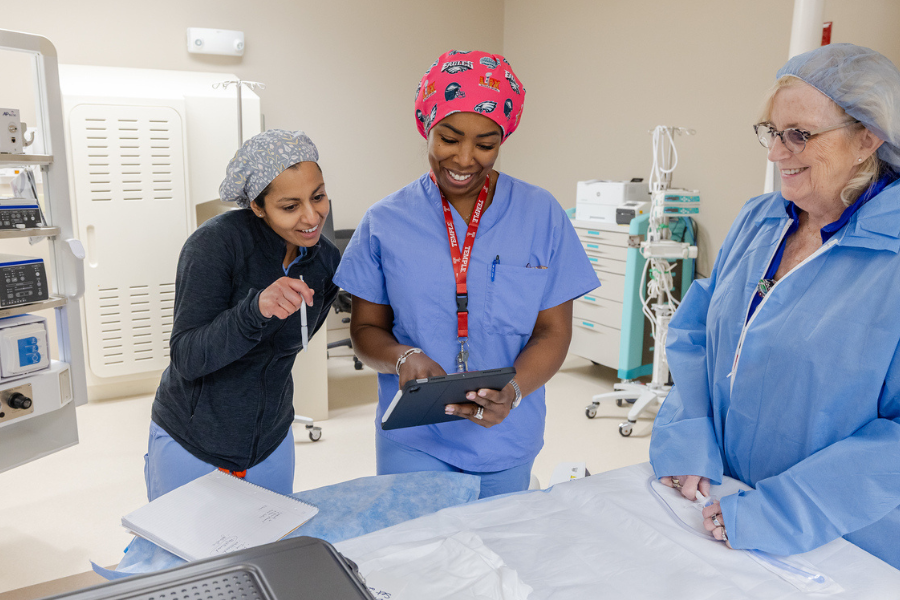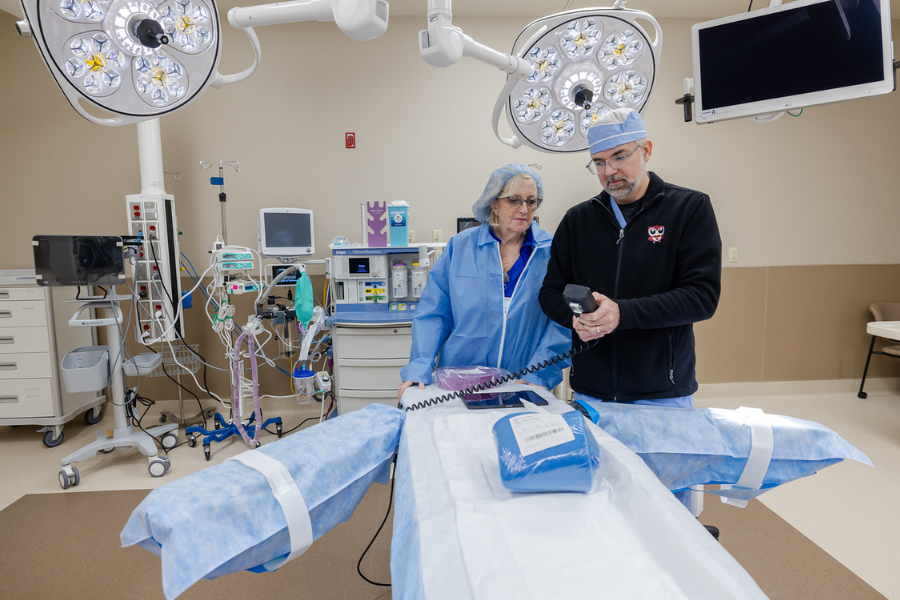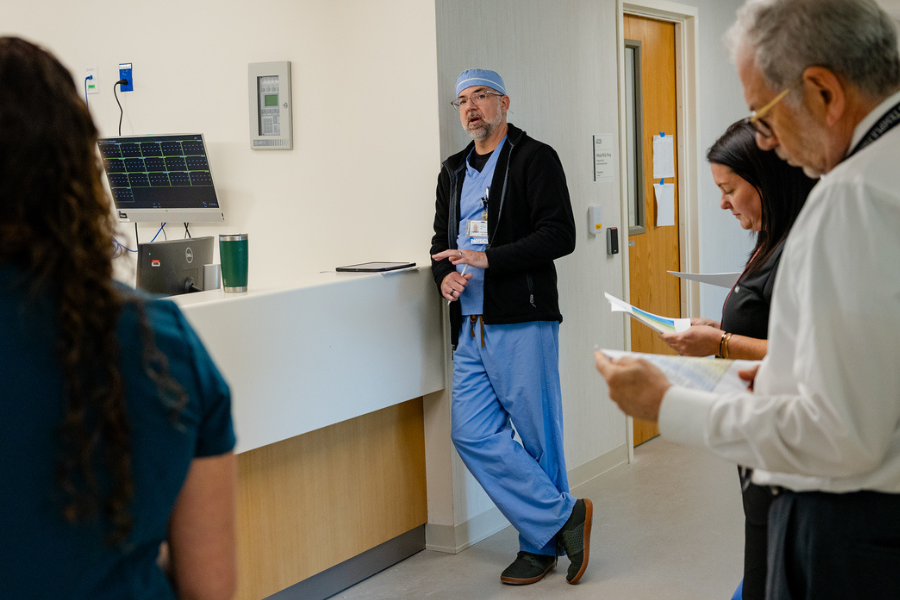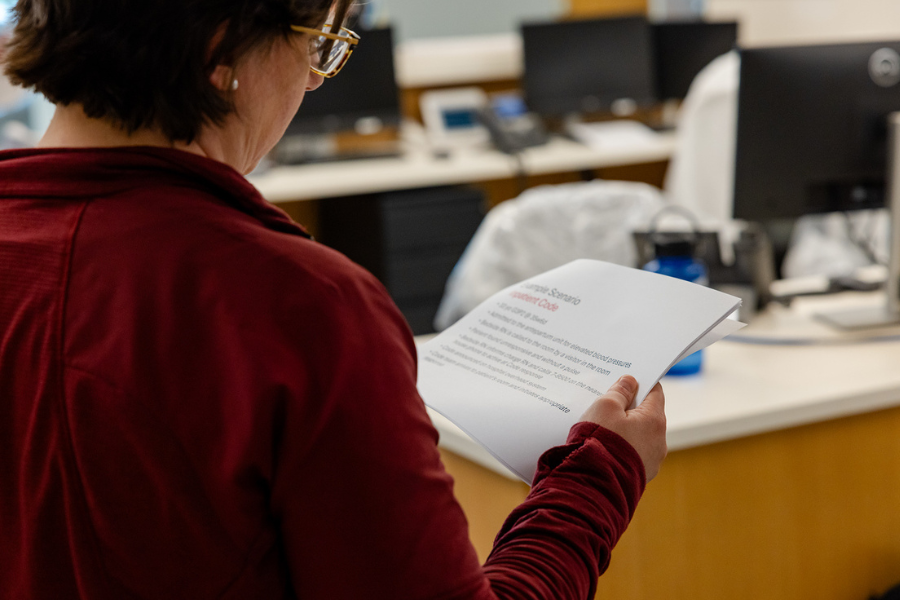At Temple Women & Families, we believe preparation makes perfect. That’s why, as we get ready to open our new hospital, we’ve developed a series of simulations to fine-tune our responses to a wide range of clinical situations.
“The simulations deal with everything from OB emergencies to code scenarios to surgical events,” says John Kissko III, MD, Anesthesia Site Chief at Temple Women & Families and Director of the High Risk Obstetric Anesthesia Clinic, who is leading this work.
“We’ve planned for intrapartum emergencies, like a shoulder dystocia during delivery, and scenarios like a precipitous delivery in our stabilization area,” Dr. Kissko continues. “We’ve also rehearsed activating surgical specialty backup from TUH-Main Campus should they be needed during a procedure at Temple Women & Families. We’ve even prepared for events like a support person passing out during an epidural placement.”
The goal is to practice our protocols until executing them on the new campus becomes second nature. “Holding all these dry runs means everyone will know what they’re doing inside and out by the time we have our first patient,” Dr. Kissko explains.
Step-by-Step Simulations
To create these simulations, Dr. Kissko and his team made an initial list of situations they thought would be important to address. “Then, we went to the leaders of our clinical groups—Maternal/Fetal Medicine, OB/GYN, Neonatology, Nursing, Radiology, Neurology, Emergency Medicine, and others—and asked them for their input,” he explains.
After using that feedback to further develop the list, Dr. Kissko and his team held tabletop exercises for the scenarios. Leaders and clinicians were brought in to do verbal run-throughs of each situation, talking about how they would proceed and ensuring they were on the same page.
Then, when it's time to hold each simulation at Temple Women & Families, team members who would be involved in an actual event will be brought in to participate.
“Not only are they the people who are going to be most involved in these situations, and who need to learn how this will work in our new hospital, but they’re also the boots-on-the-ground employees who will be able to tell us, ‘Hey, this won’t actually work in the moment. This is how we can make it better,’” he explains.
Continuous Reassessment
Once the team gets a scenario down pat, that doesn’t mean they’ll stop practicing. “We’re going to keep running the simulations,” Dr. Kissko says. “We want to do continuous reassessments to ensure what we’re doing is the most efficient use of resources and what’s best for our teams—and, most importantly, what’s best for our patients.”
All of this is in the service of providing the safest, highest-quality care on our opening day and beyond. “We want our patients to know that we’re prepared for these situations, and for anything they might need,” Dr. Kissko says. “And we’re going to keep checking in when we’re up and running to make sure the hospital continues to operate at that very top level.”
